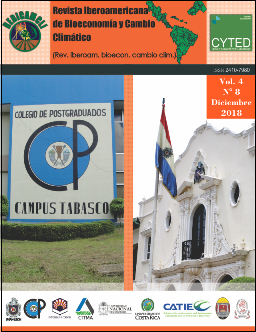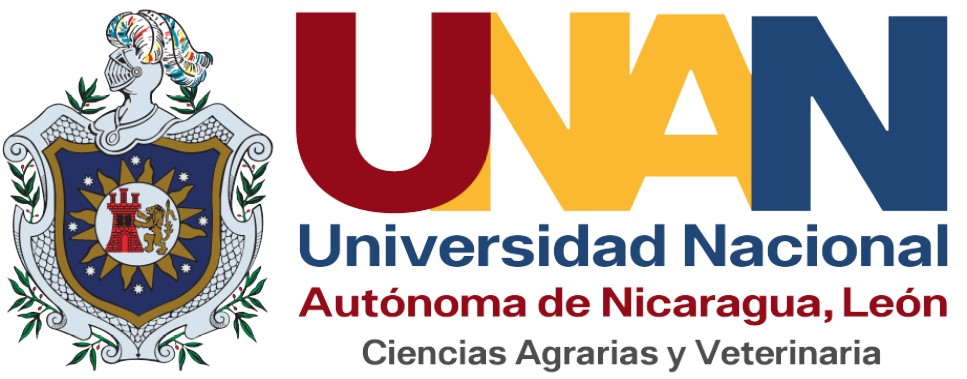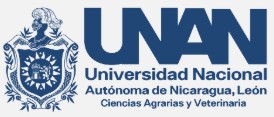Aplicación de la estadística robusta en la identificación de valores “OUTLIERS” en análisis de residuos de clorpirifos en maní. programa elaborado en Hp-Basic utilizando la calculadora gráfica HP Prime
DOI:
https://doi.org/10.5377/ribcc.v4i8.6466Palabras clave:
Valores outliers, Estadística robusta, Algortimo de Huber, Test de Dixon, Test de Grubbs, Lenguaje HP Basic, Factor recobrado, Análisis clorpirifos en maníResumen
En el presente trabajo se ha aplicado la estadística robusta para la identificación de valores “outliers” en la determinación del factor recobrado en el análisis de residuos de clorpirifos en maní por cromatografía de gases con detector ECD. Para ello fue elaborado un programa en lenguaje HP-BASIC, basado en la estadística robusta y específicamente en el algoritmo de Huber y el cual fue editado en la calculadora gráfica de última generación HP PRIME Graphing Calculator. El programa fue ejecutado ingresando los datos obtenidos de los resultados de la evaluación del factor de recobrado para el método de análisis de clorpirifos en una muestra de referencia interna de maní, obteniéndose como resultado un estimado de los parámetros de la población y la identificación de 3 “outliers”. Este programa fue validado con uno de referencia elaborado en Excel por el Comité de Métodos Analíticos de la Royal Society of Chemistry, observándose que la desviación de los parámetros de la población (m,s) fueron menores que la precisión iterativa, lo que indica que no hubo diferencias significativas entre los dos programas. Por otro lado, estos resultados se compararon con los obtenidos por las pruebas clásicas de Dixon y de Grubbs, concluyendo que el método de Huber es el más sensible. El menos sensible es el test de Dixon, dado que su aplicación no detectó ningún outlier, mientras que el test de Grubbs identificó los dos valores más pequeños.
Descargas
Métricas
Citas
AMC Technical Brief (2004), Royal Soc. of Chem. No. 6
ASTM D. (2002). "Applying Statistical Quality Techniques" Norma Internacional, EE.UU.
Codex Alimentarius. (2000). "Residuos de plaguicidas presentes en alimentos y piensos", 32ª Reunión, Países Bajos.
Delgado G y Hernández N. (2014). "Evaluación de la homogeneidad de la muestra y estudio intralaboratorio de la precisión intermedia en la determinación de aflatoxinas en maní", Universitas UNAN-León, Vol 5, 1, 11-25.
Delgado, G. (2015). Programa elaborado en MAPLE 2015, Universidad Nacional Autónoma de Nicaragua, León (UNAN-León).
Dixon, WJ. (1950). Análisis de valores extremos. The Annals of Mathematical Statistics. 21 (4), 488-506.
European Food Safety Autority, (2014), EFSA Journal, Vol 12, 12, 3942.
Feinberg M., (1996), "La Validation des Méthodes d´Analyse", Masson, París, pag. 383.
Grubbs F.E., (1969), Tecnometrics, 1969, 11, 1. https://doi.org/10.1080/00401706.1969.10490657
ISO 5721-2. (1994). "Accuracy of measurements methods and results", Norma Internacional, Ginebra, Suiza;
ISO 5721-5, (2017) "Accuracy of measurements methods and results", Norma Internacional, Ginebra, Suiza.
Thompson, M. (2011). The characteristic function, a method-specific alternative to the Horwitz function. Journal of AOAC International, 95(6), 1803-1806.
Basurto, E., & Mancera, E. (2013, August). USO DE HP PRIME EN LA COMPRENSIÓN DE PARÁMETROS EN FUNCIONES POLINOMIALES. In VI Congresso Internacional de Ensino de Matemática-2013.
Wadsworth, H. M., Stephens, K. S., & Godfrey, A. B. (2005). Métodos de control de calidad. Cecsa.
Publicado
Cómo citar
Licencia
Derechos de autor 2018 Revista Iberoamericana de Bioeconomía y Cambio Climático

Esta obra está bajo una licencia internacional Creative Commons Atribución-NoComercial-CompartirIgual 4.0.
Copyright © 2025 Rev. iberoam. bioecon. cambio clim. Universidad Nacional Autónoma de Nicaragua León (UNAN-León), Area de Conocimiento de Ciencias Agrarias y Veterinarias/ Area Especifica de Agroecología y agronegocios /Centro de Investigación Ciencias Agrarias y Veterinarias. Dirección Académica. Departamento de Investigaçión. Unidad de publicaciones y eventos cientificos.












 EDITORIAL
EDITORIAL  e-ISSN
e-ISSN


 COPYRIGHT
COPYRIGHT  Este trabajo está licenciado bajo una Licencia Internacional
Este trabajo está licenciado bajo una Licencia Internacional 












